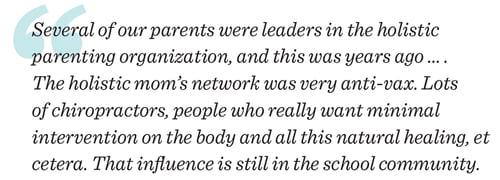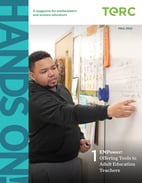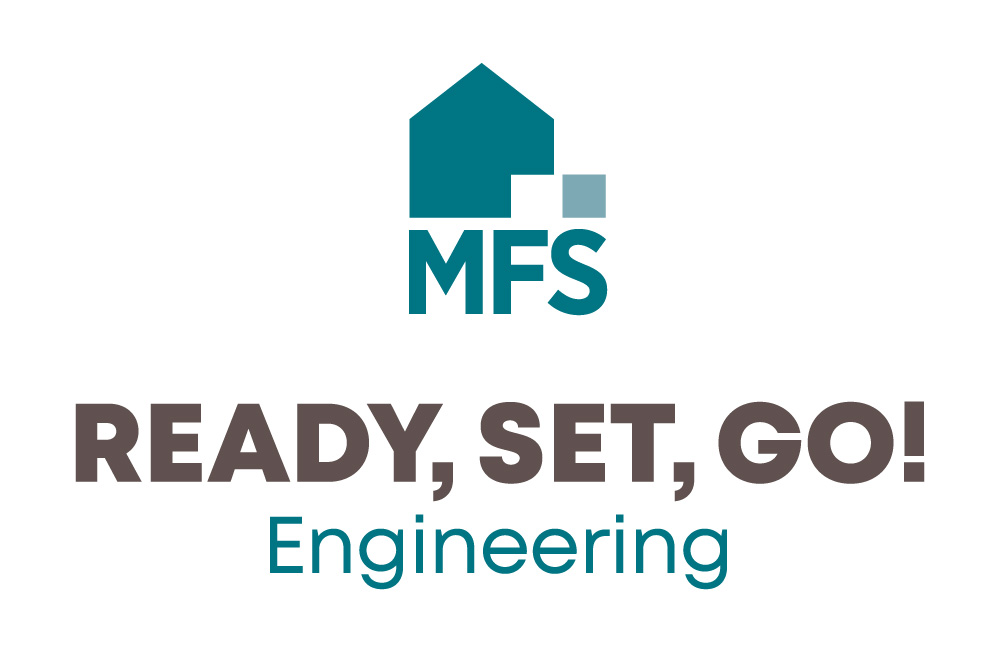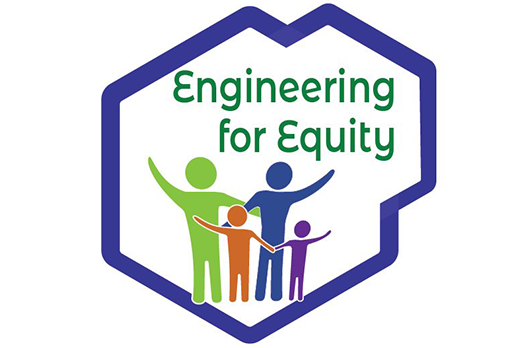TERC Blog
The Construction of Silence in a Parent Support Group
Tracing the Invisible Fabric
In a project I call “Tracing the invisible fabric of science in everyday life,” I have been investigating “vernacular science” in several interest groups in eastern New England. My research is based on the idea that an understanding of science learning in our society must take account of the processes by which science is understood, constructed, and used in everyday settings— the ‘vernacular’ culture of science (Wagner, 2007).
Vernacular science is constructed through conversation, and is situated in specific arenas of action, communities of interest (Fischer, 2001) or of practice (Lave and Wenger, 1991)—such as garden clubs, hunting associations, parent groups, and so on. Each community has its own body of knowledge, its own practices and discourse, and its own methods of self-propagation within and across age cohorts. So vernacular science, like any other kind of knowing, is a social achievement, and it is one part of how a person enacts their identity and plays their role within the multiple cultures they participate in (Holland and Lave, 2009).
Since the onset of the COVID pandemic, there has been continuing controversy about the safety and efficacy of vaccines (among other science-related disputes). This has been infuriating for some people who place confidence in medical science and public health, but it should not have been a surprise. In this article, I tell a story drawn from field data collected in 2018–19, before any of us had heard of COVID. It is a story about how people see “good science” through a lens, not of ignorance or of prejudice, but of alternative accounts of how the world works.
Setting for This Study
I have been making ethnographic observations in several community settings, asking what science is important to the group, how it gets discussed, and how—and from whom— people learn their science. (It isn’t always called “science,” though; see Drayton, 2018). In 2018–19 I happened to be participating in a parent group in a school (it will be called The School in this article), which grows out of a world-wide philosophical movement originating in the early 1920s (I will refer to this as The Movement).
I had joined the group after speaking about it with a “gatekeeper,” one of the parents who had gathered the group, to make sure that I would not be a disruptive presence. I sat in the meetings, taking field notes either during the meeting or (more often) sitting in my car directly afterwards. I also conducted a few interviews to dig deeper on various subjects that came up.
At this time, several outbreaks of measles and whooping cough had occurred on the West and East Coasts in communities where vaccine resistance or hesitation was common (Dubé et al., 2021). Mostly these clusters were associated with communities committed to one or another counter-cultural approach to education, including some schools in The Movement. Because of these outbreaks, vaccination was a live issue in private conversations or in the parking lot outside The School, and in the community at large—except in the parent group meetings, where the topic never came up. What was going on?
Three Orientations, Three Sources of Authority
It became evident that there were three main points of view on the question of the vaccines for childhood diseases.
[1] Philosophical Parents
There were “philosophical” parents, who had come to The School because of the educational philosophy that underlies it. Within that philosophical stream, there are elaborated alternative views of education, personality development across the life-cycle, agriculture, and medicine, each with a decades-long history of research and practice, training and accreditation programs, and academic and popular books, websites, social media, and periodicals. The medical authorities of The Movement have asserted that vaccination is a useful medical procedure. Nevertheless, some in The Movement are vaccine-averse, owing to possible negative effects on the body’s systemic health and robustness to disease in general and an alternative account of the body-mind relationship that draws on some aspects of herbal and other “naturopathic” medicine. For this reason, these people preferentially seek alternative methods for protection against infection. Some teachers inclined to this latter view; some parents did, as well, from their own study of the philosophy behind The Movement. The knowledge that respected authorities advocate this view and can articulate the theory behind it in some depth, provided reassurance and support for those in this group. The “philosophical” group takes its lead from experienced, usually older, practitioners of the Movement’s philosophy. The philosophy gave them a rich explanatory framework within which decisions about vaccination were situated.
[2] New Age Parents
Another group of parents, which might be characterized as “New Age,” were attracted by The School’s “whole child” pedagogy. Many subscribed to ideas from the “holistic parenting” movement widespread in Europe and North America, placing a high value on experiences in nature, on storytelling, the arts, and community life, “natural” foods and medicines, and less emphasis on conventional success and academic achievement. The parents in this group were not particularly well-informed about the principles on which The School is founded, but assumed that their own worldview is in harmony with that of The Movement. The “New Age” parents’ attitudes towards vaccination were negative, often in absolutist terms, shunning all vaccines for any childhood diseases.
The “New Age” movement is eclectic and wildly diverse and the “New Age” parents offered various reasons for their position, ranging from fears about possible negative sideeffects of vaccines, to a general alternative view that much disease is the result of environmental factors such as air or water pollution, stress, or pesticide residues in foods. Their authorities for their position included a range of “health influencers” on the Internet, as well as trusted figures in the local community. There are elders in this community as well—in this case, parents who have been active in the holistic parenting movement, or otherwise worked to develop an elaborated theoretical account of health and wholeness, both for their children and for themselves.

[3] Mainstream Parents
A third group of parents followed the guidance of mainstream medicine, vaccinating their children as recommended, and making use of “allopathic” medicines as prescribed by their doctors. While some of these parents were also concerned about health effects of pollution, pesticides, and so forth, and often adopted some “holistic health” practices, it appeared that their main source of authority for their actions about vaccines was their physician, supplemented by media or other sources. Such parents might or might not have had a coherent explanatory account of how and why vaccines “work,” but the whole of mainstream science and medicine served as a basis for their decisions. The “mainstream” group appealed to popular accounts of science and medicine, and consulted their physicians for immunizations. In a sense, they could take for granted the established findings of mainstream science and medicine—without necessarily understanding them in depth. To summarize: Each of these groups was well-represented in the parent body. Each of them appealed to some authority to support their position, relating it to more general theories about human nature and mainstream science. Consequently, when a new scientific or health topic came up, they had a framework within which to interpret and evaluate the new idea or practice.
The Construction of Silence, and the Role of Common Ground
Robust discussions of child-rearing practices, the economy, and a wide range of other subjects were common in the community, so it was surprising that vaccination did not come up in the parent group. One parent told me that in less public settings,

Vaccination was not the only topic in which deep and well supported convictions resulted in public silence. Was it merely avoidance of conflict that resulted in a kind of self censorship? Perhaps in some cases, but my observations and interviews suggest that parental sense-making and decision making as part of The School’s community were influenced also by a commitment to “common ground”—in this case the commitment to a particular experience for their children. This seemed to set or calibrate the priorities by which parents chose to speak or to be silent on deeply controversial issues. When the COVID crisis came to town in 2020, the three communities I have described were prepared, and each reacted in accordance with their own framing of science, the science of their “heart communities.”
Reflections
Science educators are becoming more aware and respectful of the “funds of knowledge” (Calabrese-Barton and Tan, 2009) that children bring to schooling from their home and community life. Very often, this awareness is seen primarily as an alternate approach to teaching mainstream science content. The funds of knowledge provide new resources for science learning, and a way to teach science in a way that is more inclusive of cultural diversity. However, children and their parents in the same community may also inhabit cultures that resist mainstream science—about climate change, about evolution, about a public health issue—on the basis of an alternative account of the way the world works.
Vernacular science is embedded in (and serviceable for) local communities of interest, and is part of how people engage in “the process of authority” (Dewey, 2008). Its relationship to mainstream science can be conflictual, confounding, or complementary/synergistic. A student—or any other human— who works within such a vernacular account of the world is paying attention to values and trusted sources of authority that are part of their meaning-making. They don’t live in a “private universe” but a rich, dynamic, and complex world, shared with friends, family, and community, who also share frames for interpreting new ideas and information—whether from the media or the school room.
Yet we all belong to more than one community and at times become aware—sometimes painfully—that our colleagues or neighbors do not share the same values or respect the same authorities. In order to cope, we can try to “translate” ideas from one mental world to another. Or we can just be silent, a phenomenon that has long been familiar to anthropologists (Norgaard, 2011; Zerubavel, 2006). The silence in each community gets its meanings from differing motivations— such as fear of censure, a desire for comity, or a shared commitment to an acknowledged common good.
In this case, the education of their children according to a specific pedagogy served as a common ground upon which to establish relationship and mutual understanding (Clark, 1996). Finding this common ground also resulted in the construction of silence about certain topics, and whether the silence can be broken will depend on how the common ground can be reconstructed to support dialogue among deeply held worldviews. The challenging, uncertain nature of such conversations can itself make people reluctant to break the silence. My research suggests that such community dynamics deserve further research, because they are an important part of what we call “science education.”
Earlier research on this project can be found in Hands On! Spring 2018, ‘Tracing The Invisible Fabric of Everyday Science: Field Notes,’ found at https://www.terc.edu/hands-on-magazine-spring-2018/
References
Calabrese-Barton, A., & Tan, E. (2009). Funds of knowledge and discourses and hybrid space. Journal of Research in Science Teaching 46(1): 50–73. https://doi.org/10.1002/ tea.20269.
Clark, H. H. (1996). Using language. Cambridge: Cambridge University Press.
Dewey, J. (2008). Democracy and Education in the world of today. In: Boydston, J.A. (Ed.) The Later Works of John Dewey, Volume 13, 1925 - 1953: 1938-1939. Bloomington, IL: Southern Illinois University Press. pp. 294–303.
Drayton, B. (2018). Tracing the invisible fabric of science meaning: Field notes. Hands On! (Spring-Summer issue): 11–13.
Dubé, È., J. K. Ward, P. Verger, and N. E. Macdonald (2021). Vaccine hesitancy, acceptance, and anti-vaccination: Trends and future prospects for public health. Annual Review of Public Health 42:175–91.
Fischer, G. (2001). Communities of interest: Learning through the interaction of multiple knowledge systems. In 24th Annual Information Systems Research Seminar in Scandinavia (IRIS ‘24 : pp. 1– 14). Ulvik, Norway: University of Oslo.
Holland, D. and J. Lave (2009) Social practice theory and the historical production of persons. Actio 2:1–15.
Lave, J. and E. Wenger (1991) Situated learning: Legitimate peripheral participation. Cambridge: Cambridge University Press.
Norgaard, K. M. (2011) Living in denial: climate change, emotions, and everyday life. Cambridge, MA: MIT Press.
Zerubavel, E. (2006) The elephant in the room: Silence and denial in everyday life. New York: Oxford University Press.










